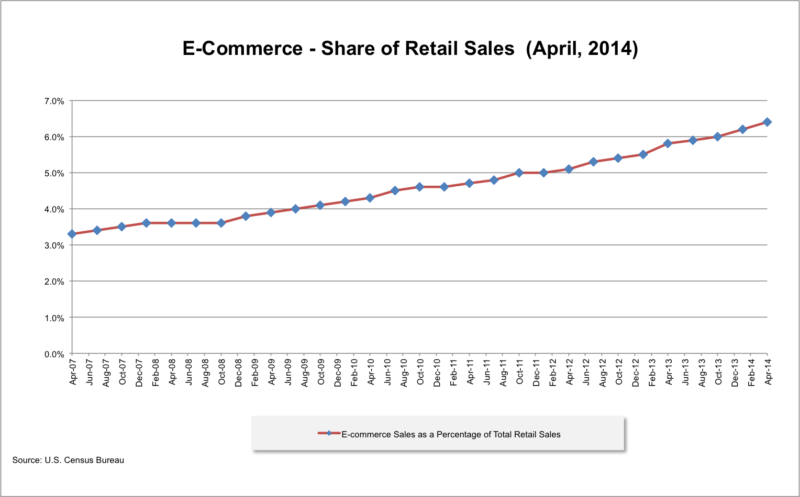Walmart’s New Savings Catcher: The Killer App
If there were ever a no brainer in the world of retail, it would be the decision to create an app like this.

Offering a “best price” guarantee to customers certainly isn’t a new concept. In fact, the world’s largest public corporation, Walmart, has made “lowest prices anytime” part of its value proposition since it opened in the 1960s.
Other retailers have participated in similar programs for a while — the hope being that customers no longer feel the need to comparison shop.
Then along came Walmart’s new Savings Catcher program, which is available as a part of the latest flagship Walmart mobile app for iOS and Android, both released earlier this month. And while it isn’t technically just an app — users can also go online and enter receipt information into their account on a PC — the mobile app version of what Walmart is offering is where the real power is.
A Little History
Taking a step back, it’s important to understand that one of the biggest challenges retailers face is an inability to connect their customers’ offline shopping carts with any type of customer profile.
[pullquote]”Our investments in ecommerce and mobile are very important, as the lines between digital and physical retail continue to blur… our customers expect a seamless experience….” -Doug McMillon, president and CEO of Wal-Mart Stores [/pullquote]
Yes, rewards programs help, but not everyone sees the value in signing up. Many that do sign up often forget to bring their cards with them, so cashiers either scan a generic barcode or rely on the customer to provide a phone number. In either case, the likelihood of the data being accurate drops dramatically.
Why is it important for retailers to understand what their customers are buying? Because if they do, their ability to target those customers based on patterns and predictive models goes up exponentially.
For online retailers or brands that sell direct, this has become a non-issue as most of these “e-tailers” require customers to either create an account or (at a minimum) provide basic info like address, email and, in all cases, a credit card number or online payment systems information e.g., PayPal.
While many businesses continue to see increases in sales coming in via their online/mobile channels, as of April of 2014, these channels only account for 6.4% of total retail sales, according to the U.S. Census Bureau.

In Walmart’s case, though it announced an increase of 24% in ecommerce sales globally in its quarterly earnings call earlier this month, company execs gave ecommerce credit for only 0.3% of comparable store sales growth for the most recent quarter. Clearly, the lion’s share of all Walmart’s sales are still accomplished in store. But the gap between online and in-store is growing narrower.
“Our investments in ecommerce and mobile are very important, as the lines between digital and physical retail continue to blur,” said Doug McMillon, president and CEO of Wal-Mart Stores, on a recent conference call with investors. “Our customers expect a seamless experience, and we’re working to deliver that for them around the world.”
What Is Savings Catcher?
As I prefaced at the beginning of this column, many retailers, including Walmart, have offered lowest-price guarantees. But, often, these programs require customers to bring receipts or ad circulars into stores. And with a time limit on when the item(s) were purchased and when cash back will be redeemed — usually seven days or less — this requires customers to make a separate trip to the store. As some of us less-organized folks know, keeping track of all our receipts can also be messy.
Savings Catcher is a way for Walmart customers to ensure that they are getting the best price on any item they buy at Walmart, and they are able to do it easily from the comfort of their own home… or car… or office… or classroom.
Gone are the days of having to type in 19 digit UPC codes. While certainly not a deal breaker, it’s one more thing that gets in the way of the user completing the task. Instead, download the app, log in and use the camera function on your smartphone to scan the UPC or QR code on your receipt.

But Wait, There’s More
While the greatest value of Savings Catcher is its ability to connect rich shopper data to personal accounts, there are also several other elements to the Walmart app that make it truly “killer.”
For one, customers can use the app to (re)fill prescriptions. Customers can also use it to find local stores; but, arguably the most helpful aspect of the app is its ability to create smart lists that facilitate navigation to specific aisles within the store (one of my recent top trends) to find exactly what they are looking for. Talk about a time saver!

Last but not least, customers can find in-store prices of goods at their local Walmart ahead of time without having to search online or call ahead.
It’s worth noting that few of these features are unique to the Walmart app. However, one of the biggest issues that retailers and other B2C companies have is encouraging customers to not only download their app but to use it with regularity.
Because of the automated savings feature in Savings Catcher, Walmart customers now have reason to regularly check their balance, scan receipts and price items. Because the app is also location-aware, customer are giving implicit permission to track where and when they are shopping. This adds one more layer of valuable data.
While not nearly as important, the app also allows for customers to search and buy items online from Walmart.com. Given the pervasiveness and dominant position that Amazon.com maintains in ecommerce — it sells more online than its next 12 biggest competitors online combined — encouraging at least another percentage or two of Walmart customers to use Walmart.com first could be a nice secondary benefit.
Don’t Forget The Data
Do you remember the days before searching and shopping online (and now on our mobile devices) became big? There was a whole ecosystem that grew up around catalog shopping.
The benefit companies had back then was that:
- They could precisely target their prospects or customers based on data they had from the large aggregators like Acxiom and Harte Hanks on top of their own purchase history data, and…
- They could run endless experiments by customizing offers to certain segments or test how sales rose and fell by placing items in the catalog in closer proximity to one another.
No wonder catalogers were some of the first to become successful online retailers. With the rise of ecommerce and mobile shopping, data collection on customers has risen precipitously, but a large chasm has emerged for those retailers who sell both online and offline.
In many cases, the online version of the store has ten times richer data than its brick and mortar counterpart. Unless your name starts with “A” and ends with “mazon,” this becomes a real problem. This is where the real value of Walmart’s new Savings Catcher comes in.
With customers provided the incentive to always scan their in-store receipts — it’s free, it’s easy and the benefit is clear — now Walmart can see new patterns arise like:
- How many stores do customers shop at on average?
- What differences are there between their online and offline buying behavior?
- What complementary items can Walmart push online now that they know what customers are buying offline?
- Are there better times to advertise offline or online deals based on buying behavior (Walmart gets precise buy time and store location POS data)?
- Did fliers in local newspapers have an online or offline impact? This is a huge one as large retailers like Walmart still spend billions of dollars in advertising in local circulars.
This new stream of data also provides critical longitudinal data as well as predictive insights for future store development:
- Did moving an item to the front of the store make a difference in volume sold? If so, how much?
- What impact did weather have not only on in-store purchases (Walmart already knows this in aggregate) but how about offline? Does it impact different shoppers differently e.g., do older shoppers avoid hot days as much as they avoid rainy days?
- If a customer lives equidistant from two stores, what are the determining factors that lead them toward one versus the other?
- At what point does overcrowding discourage shoppers from coming in?
- What impact do new competitors have in the local market (again, Walmart already knows this but not by target segment)?
Will Others Follow Suit?
If there were ever a no brainer in the world of retail, it would be the decision to create a similar app. Lowering advertising costs, tapping into richer data sets, encouraging more regular communication between brand and customer, and better database marketing are just a few of the key benefits to capturing this kind of information.
Yes, matching other competitors’ prices will eat into margin, and that’s not an insignificant consideration. However, if retailers consider that a marketing cost versus a margin hit, they should quickly be able to see the ROI of tapping into this powerful source of data.
Rarely does something so obvious have such an opportunity to be such a game changer. Kudos to Walmart for having the insight to create the killer app, especially when it was right under our noses the whole time.
Contributing authors are invited to create content for MarTech and are chosen for their expertise and contribution to the martech community. Our contributors work under the oversight of the editorial staff and contributions are checked for quality and relevance to our readers. MarTech is owned by Semrush. Contributor was not asked to make any direct or indirect mentions of Semrush. The opinions they express are their own.
Related stories
New on MarTech